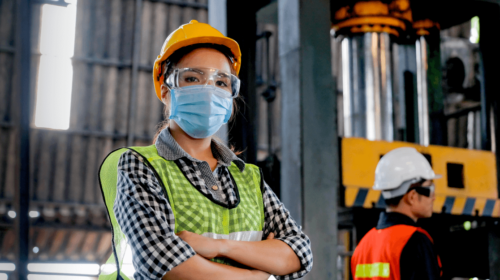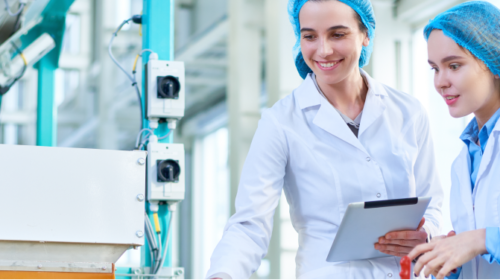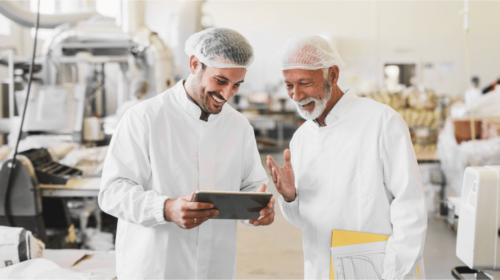
How to ensure social distancing in manufacturing
Digital operations help you enforce social distancing in manufacturing to comply to with stringent measures and protect your workers.

In response to COVID-19, many manufacturers have already accelerated factory digitization in order to cope with the impact corona has on their operations. In terms of Safety, Health & Environment (SHE), the pandemic requires manufacturers to take stringent measures to protect their workforces. We’d like to show you how digital operations can help you enforce social distancing in manufacturing.
Remote control & collaboration
While most office employees can easily work from home, most factories are not designed to be managed remotely and lack the technological infrastructure to support remote working. Digital manufacturing operations allow you to run a factory with fewer employees on-site, and more employees working remotely—with full access to all required information to do their jobs. Plant leaders can also monitor factory performance remotely with tools like digital heat maps supporting Root Cause Analysis, or sensors measuring effectiveness and detecting defects/deviations.
Furthermore, digitized processes allow for remote collaboration on tasks, eliminating the need for social interaction. Shift handovers and on-site communication between workers, engineers and managers on the factory floor can all be done remotely, reducing the need to travel and limiting exposure to corona while ensuring business continuity by being able to do more with less. Workers can complete jobs such as SOPs (Standard Operating Procedures) and checklists via mobile or smart glasses, and managers can use digital signatures for sign-off—allowing for social distancing in manufacturing, increased autonomy and fewer mistakes.
Workforce tracking
Location-based solutions using GPS and NFC enables workforce tracking. This allows plant leaders to see where employees are to monitor social distancing on the factory floor. Combined with geo-fencing, automated workflows notify the right people if worker density thresholds are exceeded in certain areas. This can help you detect violation of social distancing policies or understaffing due to increased absenteeism. Additionally, location data can aid contact tracing in the event a worker tests positive for coronavirus. In the case of Amazon, they took this step even further and used advanced Machine Learning software to monitor cameras in and around their facilities to ensure that employees are maintaining a safe distance.
Worker autonomy
The right knowledge at the right time enables workers to do their job autonomously, decreasing the amount of social interactions required. Via tools such as mobile devices or smart glasses combined with location services, you can make sure the right knowledge shows up at the right time. Expert knowledge can be accessed remotely, reducing the need for travel and limiting COVID-19 exposure. In a time of higher absenteeism rates in factories, increased autonomy enables a more productive factory floor and more cost-efficient operations.
Pre-work health check
Making employees feel safe when they return to work is key, as we can conclude from absenteeism rates in Chinese factories showing an increase from 5% pre-lockdown to 20% post-lockdown. People are scared to get sick and may receive additional pressure from family not to return to the workplace. Use digital workflows to send out surveys to evaluate how employees feel and keep them informed. Thanks to a digital form builder, you can easily update them to include new questions and information about safety measures, like restrictions on the use communal areas or compulsory wearing of additional PPE gear.
Related Articles

Digitize your inspections, audits and checklists

4Industry targets Nordic market via strategic partnership with Advania

